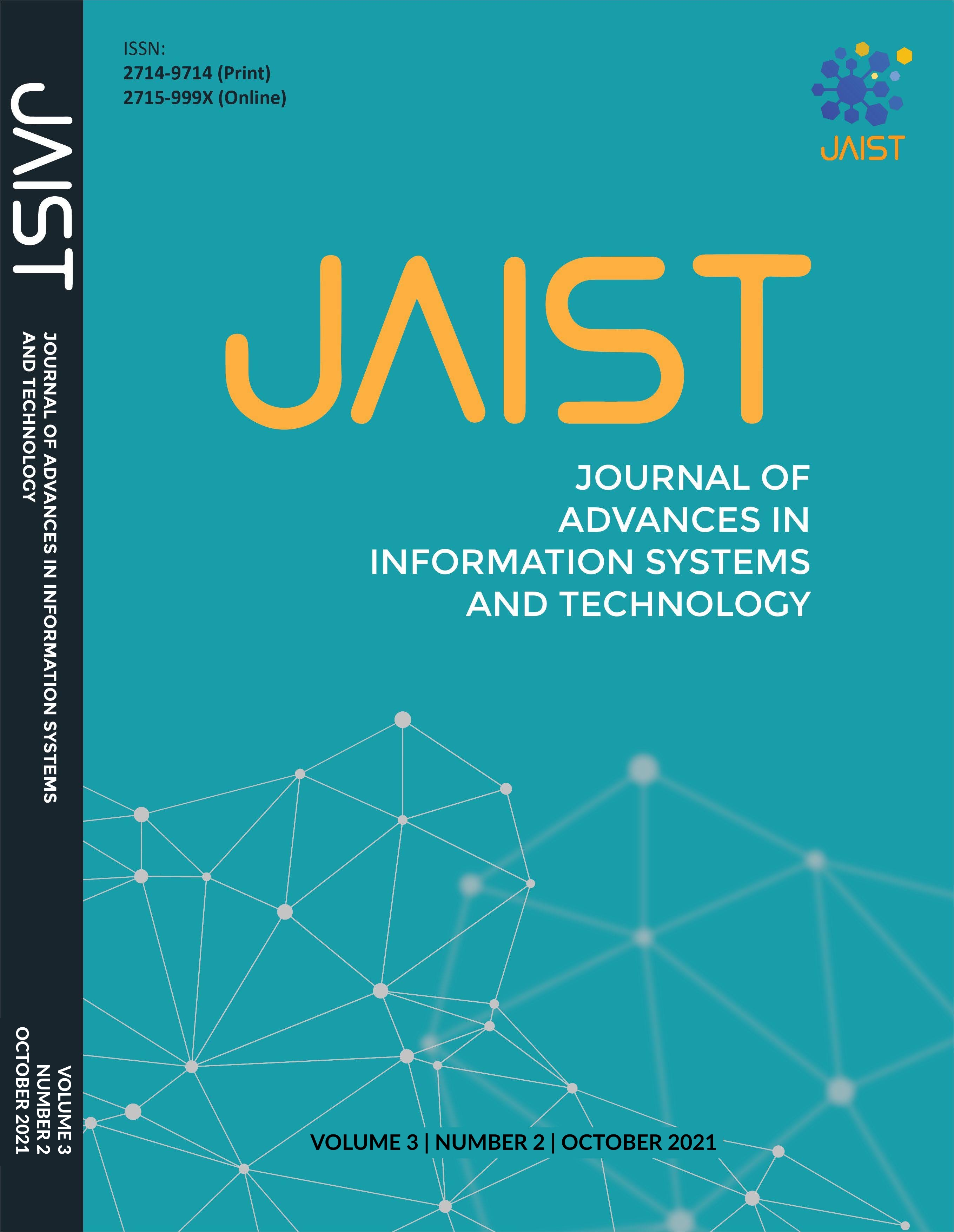Implementation of the FP-Growth Algorithm with RFID on the Monitoring System for Building Users in a Smart-Building Environment
Abstract
Internet of Things (IoT) technology is developing rapidly and is widely applied to assist all human needs. Radio Frequency Identification (RFID) is a very popular IoT device. One application is to limit employee access in the office. In this study, RFID devices are used to limit room access rights, after the building user performs an RFID scan, the data will be stored in the database. The stored data is then used to find patterns of employee activity using the FP-Growth algorithm. The FP-Growth algorithm runs by tracing the tree from bottom to top and getting frequent itemsets obtained from the FP Tree based on the stored data. This study indicates that the time required for the RFID device to scan to determine whether the user has access or not is 2000ms. The hardware communication time with the information system using the API is 262ms then proceeding from the software to the database is 239ms. In the implementation of the FP-Growth algorithm, the time required for the FP-Growth algorithm to process 100 activity data divided into 10 days is 324 ms. From the 100 activity data, it can be concluded that if the employee enters the server room, server room, guest room, and guest room, the probability of the employee entering the multimedia room is 1 (100%). Furthermore, if the employee enters the multimedia room, multimedia room, server room, employee room, and the guest room then the probability of the employee entering the data room is 0.1 (10%).
Copyright (c) 2021 Journal of Advances in Information Systems and Technology

This work is licensed under a Creative Commons Attribution-ShareAlike 4.0 International License.


